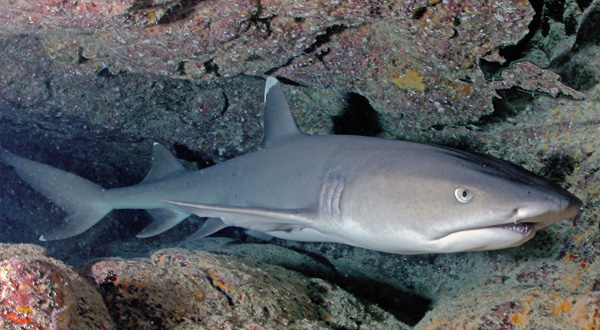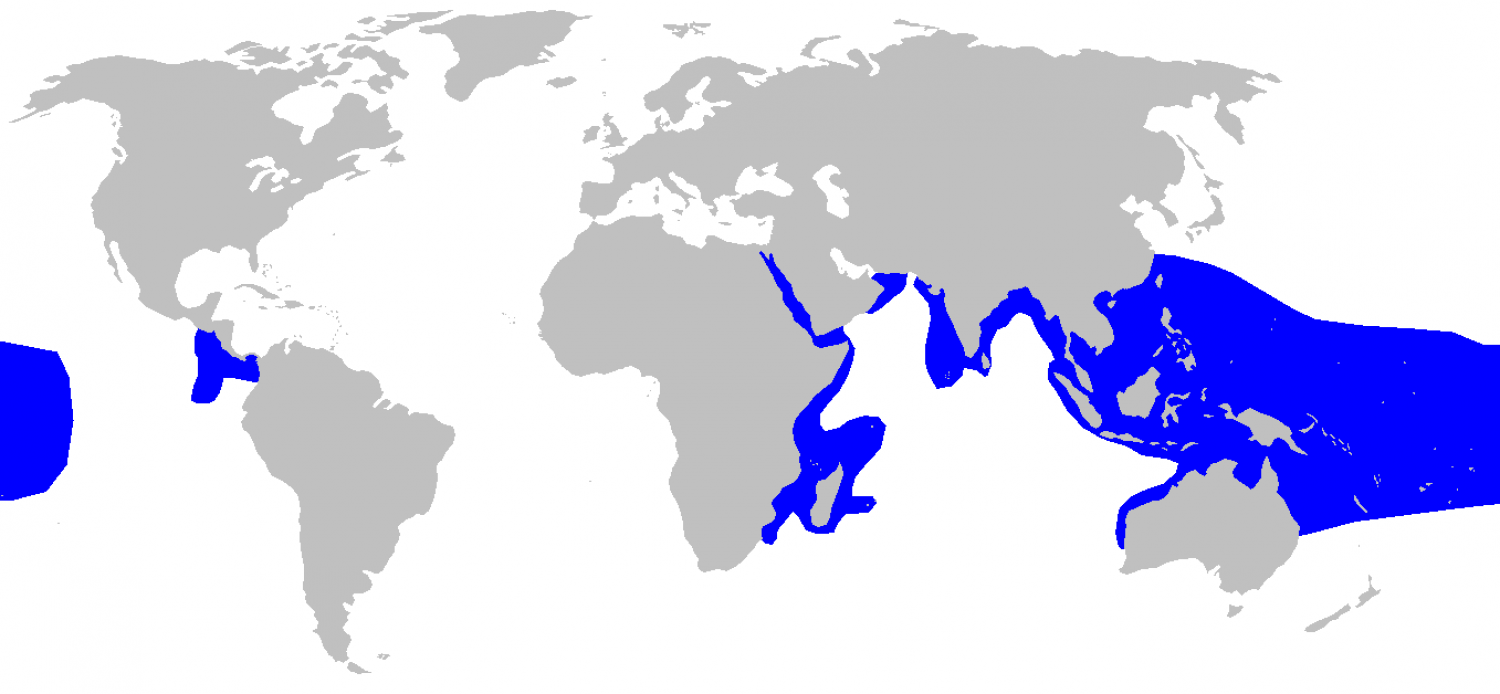

Sharks are important part of the coral reef ecosystem becuase they fill the role as the top-order predators. Reefsharks are needed for any healthy coral reef. Presense of reef sharks, like the whitetip reef shark helps indicate the coral reef is in good shape and thriving. The whitetip reef shark can be dinguished by it's white fin markings. Reef skarks are much less abundant then their prey making them more vulnerable for falling bellow healthy numbers. Fishing is a problem that can lead to these reef sharks being killed off, which is unhealthy for population control in the coral reef ecosystem. These sharks more commonly swim at the top of the reef flat. This could be on the exposed dropoffs and on reef crests. There are 3 main species or reef sharks Grey reef sharks, Whitetip reef sharks, and Blacktip reefsharks.
| WhiteTip Reef Shark | Information |
|---|---|
| Habitat | The whitetip reef shark is typically a bottom dwelling fish tending to prefer relatively shallow waters around coral and rock reefs with interspersed sandy areas. Their favorite reef configurations include caves and ledges that they use for protection. |
| Physical Appearance | Whitetip reef sharks have a slender fusiform body, an extremely short and blunt snout, a broad flattened head with prominent brow ridges, distinctively horizontally oval eyes placed laterally, and a down-turned semicirular mouth that gives this fish a rather dour expression. The fins are relatively large. The tip of the first dorsal fin is typically white. Other fins may inconsistently have similar markings. The upper half of the body may be gray or grayish-brown fading to off-white or a creamy color on the ventral side. Small gray spots may be scattered over some or all of the body. |
| Size | Whitetips are not large sharks. They have been reported to about 2.1 m (7 ft) but specimens over 1.6 m (5.3 ft) are rarely seen. Maximum reported weight is 18.3 kg (40.3 lb). |
| Diet | These fish eat a variety of things.Diet consisting of a large variety of small bony reef fishes, including eels, and various invertebrates such as octopuses, crabs, and lobsters. |
| Reproduction | Can reproduce at maturity, thought to be 5 years of age. Time of the year for breeding varies from one geographical region to another.Fertilization is internal. Embryos receive their initial nourishment from the yolk sac followed by conversion of the yolk stalk into an umbilical cord and the yolk sac into the placenta. This connection to the mother shark provides them with nourishment and metabolic exchanges during the gestation period which lasts at least five months. Litters consist of 1-5 pups, most commonly 2-3. There is no parental care after birth. |
| Behavior | They seem to spend up to a year or more in an area within 0.3 to 3 km (0.2 to 1.8 mi) of a home base. They are not aggressively territorial and are willing to share the space with others of their species.Daytime is mostly spent resting. Individuals will gather in groups, frequently lying on each other or otherwise crowded together in caves, under ledges, or in other similarly protected areas. It is common for them to return to the same place every day for their rest period, only occasionally changing location. They may also be seen lying motionless on a sandy bottom. |
| Longevity | Can live up to 25 years or more |
| Fun Facts | In Hawaii this shark is regarded by some people as a guardian spirit, aumakua, and is treated with reverence.Whitetip reef sharks belong to the family Carcharhinidae which first appeared 63 million years ago (mya), two years after the extinction of dinosaurs. Fossil evidence of whitetips have been dated to 42 million years ago. |

Habitat of whitetip reef sharks